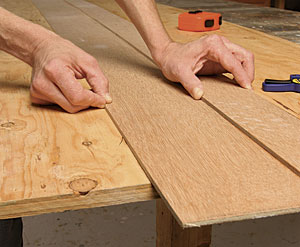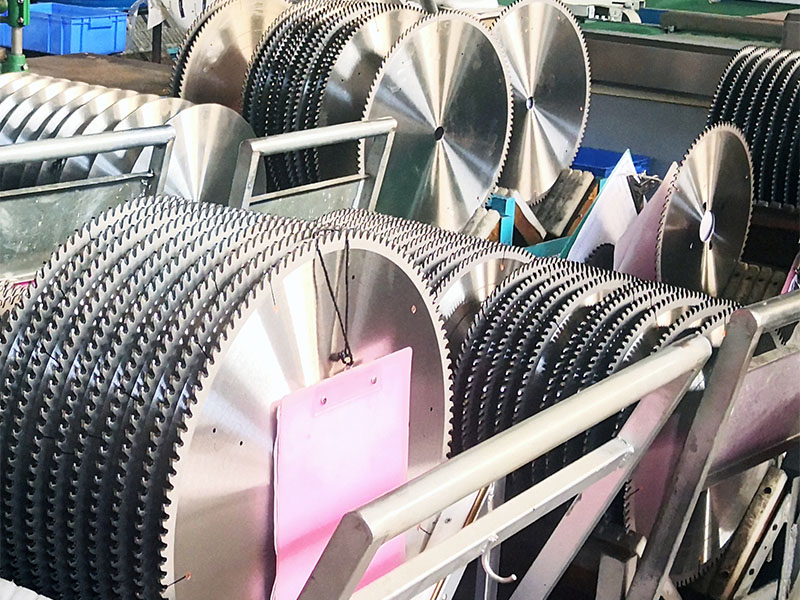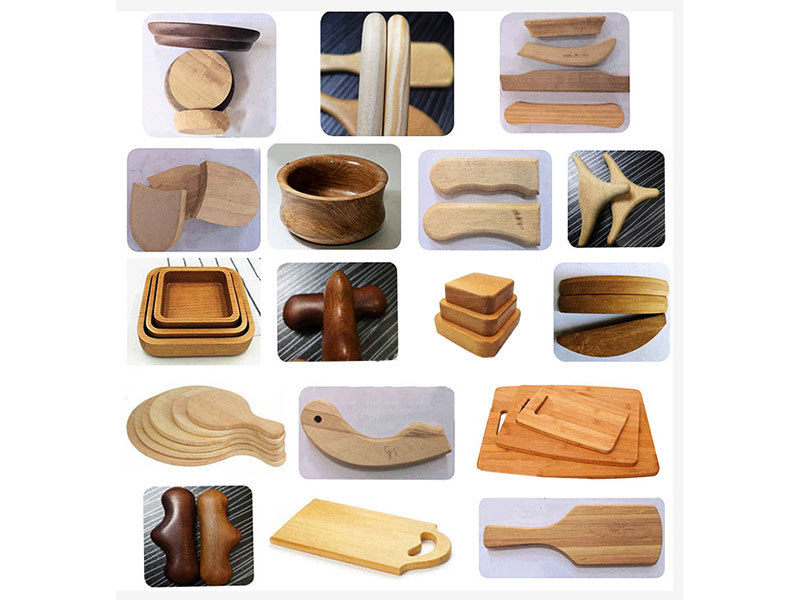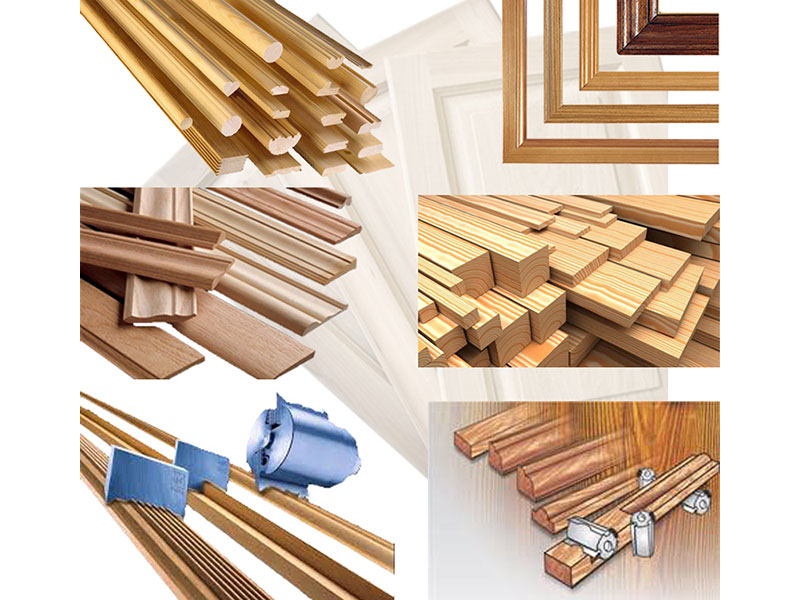
Key points of safe use monitoring of woodworking machinery
1. General monitoring points for the use of woodworking machinery
(1) Machinery operators should wear tight-fitting clothes and long hair, and must not wear ties and gloves.
(2) The installation and removal of mechanical power and the elimination of mechanical and electrical faults should be carried out by professional electricians. One-way switches should be used for machinery, and reversed two-way switches should not be used.
(3) The mechanical safety device should be complete and effective, the transmission part should be equipped with a protective cover, and all parts should be connected and tightened.
(4) The mechanical workplace should be equipped with complete and reliable fire-fighting equipment. In the workplace, smoking and hot fire are not allowed, and other flammable and explosive materials are not allowed to be mixed.
(5) The wood in the workplace should be stacked neatly, and the road should be smooth.
(6) The machinery should be kept clean, and no sundries should be placed on the workbench.
⑦) The installation of high-speed rotating parts such as mechanical pulleys, saw wheels, cutter shafts, saw blades, and grinding wheels should be balanced.
(8) The damage degree of various tools shall not exceed the requirements specified in the instruction manual.
(9) Before processing, metal objects such as iron nails and iron wires in the wood should be removed.
(10) Before the woodworking machinery with dust removal device is installed, the dust removal device should be started first, and the dust removal pipe should not be deformed or leaked.
(11) During the operation of the machine, it is not allowed to measure the size of the workpiece and clean up sawdust, shavings and sundries.
(12) During the mechanical operation, it is not allowed to cross the mechanical transmission part. Troubleshooting, disassembly and assembly of the tool should be carried out after the machine stops running and the power supply is cut off.
(13) During operation, the appropriate cutting and feeding speed should be selected according to the material thickness and humidity of the wood. Operators and auxiliary personnel should cooperate closely, and should be synchronously feeding and feeding materials at a uniform speed.
(14) When using multi-function machinery, only one of the functions should be used, and the devices of other functions should not hinder the operation.
(15) After the operation, the power supply should be cut off, the gate box should be locked, and it should be cleaned and lubricated.
(16) The mechanical noise should not exceed the noise limit of the construction site; when the mechanical noise exceeds the limit, noise reduction measures should be taken. Operators should wear personal protective equipment as required.
2. Monitoring points for safe use of circular saws
(1) The rotating saw blade on the woodworking circular saw must be provided with a protective cover.
(2) A safety baffle must be installed above the saw blade, and an arc-shaped wedge knife must be installed behind the saw blade, 10~15mm away from the teeth. The installation of the saw blade should be kept concentric with the shaft, and the diameter of the flange plate holding the saw blade should be 1/4 of the diameter of the saw blade
(3) The saw blade must have sharp teeth, no two missing teeth in a row, and the saw blade must not have cracks
(4) The thickness of the wood to be sawed shall be limited to 10~20mm exposed by the saw blade, and the length shall not be less than 500mm
(5) After starting, the sawing can be carried out after the rotation speed is normal. When feeding, do not shake the wood from side to side or lift it up, and feed it slowly in case of wood knots. When approaching the end, the push bar should be used to feed
(6) If the saw wire is deviated, it should be corrected gradually, and it should not be pulled sharply, so as not to damage the saw blade.
(⑦) The operator should wear protective glasses and should not stand in the direction of the centrifugal force of the saw blade. When working, the arm must not cross the saw blade.
3. Monitoring points for safe use of plane planer (hand-pressed planer)
(1) When planing, keep your body steady and operate with both hands. When planing a large surface, the hand should be pressed on the wood; when planing a small material, the fingers should not be lower than half of the height of the material. It is forbidden to push the material by hand after the material
(2) When the thickness of the planed wood is less than 30mm and the length is less than 400mm, it must be pushed with a pressing plate or a push rod. Wood with a thickness of 15mm and a length of less than 250mm shall not be processed on a planer
(3) Before planing the old material, the nails and mud sand on the material must be removed. If the planed wood has defects such as cracks or hard joints, it must be treated before planing. In case of wood rubbing and knots, the material should be fed slowly, and it is strictly forbidden to press the hand on the knots to force the material.
(4) The thickness and weight of the blade and the blade screw must be the same, the blade holder and the splint must be in close contact, and the blade welding seam beyond the blade head and the tool with cracks are not allowed to be used. The blade fastening screw should be embedded in the blade groove and not less than 10mm away from the back of the blade. The tightening force of the blade should comply with the provisions of the instruction manual.
(5) When the machine is running, do not put your hand into the inside of the safety baffle to move the baffle or remove the safety baffle for planing. Operation with gloves is strictly prohibited.
4. Monitoring points for safe use of planer (single-sided and multi-sided)
(1) During operation, two pieces of wood of different materials or specifications shall not be planed at a time, and the thickness of the planed wood shall not exceed the provisions of the instruction manual.
(2) The operator should stand on the side of the feeding, and the big head should be advanced when feeding, and the receiving personnel should receive the material after the planed material leaves the feeding roller.
(3) The horizontal gap between the planer and the planer table should be between 10 and 30mm. Planer knives with open slots must not be used
(4) Each feed should be 2~5mm. In case of hardwood or knots, the amount of feed should be reduced and the feeding speed should be reduced
(5) The length of the planing material shall not be less than the distance between the front and rear pressing rollers. Sheets with a thickness of less than 10mm should be placed on pallets.
(6) The backstop claw device of the planer should be sensitive and effective. The feeding toothed roller and the supporting smooth roller should be adjusted to the level, the upper and lower distances should be consistent, the toothed roller should be 1~2mm lower than the surface of the workpiece, and the smooth roller should be 0.3~0.8mm above the table surface. The work surface must not be skewed and uneven.
(7) During the planing process, when the wood runs horizontally or gets stuck, stop the machine first, then lower the table, take out the wood, and troubleshoot.
(1) Machinery operators should wear tight-fitting clothes and long hair, and must not wear ties and gloves.
(2) The installation and removal of mechanical power and the elimination of mechanical and electrical faults should be carried out by professional electricians. One-way switches should be used for machinery, and reversed two-way switches should not be used.
(3) The mechanical safety device should be complete and effective, the transmission part should be equipped with a protective cover, and all parts should be connected and tightened.
(4) The mechanical workplace should be equipped with complete and reliable fire-fighting equipment. In the workplace, smoking and hot fire are not allowed, and other flammable and explosive materials are not allowed to be mixed.
(5) The wood in the workplace should be stacked neatly, and the road should be smooth.
(6) The machinery should be kept clean, and no sundries should be placed on the workbench.
⑦) The installation of high-speed rotating parts such as mechanical pulleys, saw wheels, cutter shafts, saw blades, and grinding wheels should be balanced.
(8) The damage degree of various tools shall not exceed the requirements specified in the instruction manual.
(9) Before processing, metal objects such as iron nails and iron wires in the wood should be removed.
(10) Before the woodworking machinery with dust removal device is installed, the dust removal device should be started first, and the dust removal pipe should not be deformed or leaked.
(11) During the operation of the machine, it is not allowed to measure the size of the workpiece and clean up sawdust, shavings and sundries.
(12) During the mechanical operation, it is not allowed to cross the mechanical transmission part. Troubleshooting, disassembly and assembly of the tool should be carried out after the machine stops running and the power supply is cut off.
(13) During operation, the appropriate cutting and feeding speed should be selected according to the material thickness and humidity of the wood. Operators and auxiliary personnel should cooperate closely, and should be synchronously feeding and feeding materials at a uniform speed.
(14) When using multi-function machinery, only one of the functions should be used, and the devices of other functions should not hinder the operation.
(15) After the operation, the power supply should be cut off, the gate box should be locked, and it should be cleaned and lubricated.
(16) The mechanical noise should not exceed the noise limit of the construction site; when the mechanical noise exceeds the limit, noise reduction measures should be taken. Operators should wear personal protective equipment as required.
2. Monitoring points for safe use of circular saws
(1) The rotating saw blade on the woodworking circular saw must be provided with a protective cover.
(2) A safety baffle must be installed above the saw blade, and an arc-shaped wedge knife must be installed behind the saw blade, 10~15mm away from the teeth. The installation of the saw blade should be kept concentric with the shaft, and the diameter of the flange plate holding the saw blade should be 1/4 of the diameter of the saw blade
(3) The saw blade must have sharp teeth, no two missing teeth in a row, and the saw blade must not have cracks
(4) The thickness of the wood to be sawed shall be limited to 10~20mm exposed by the saw blade, and the length shall not be less than 500mm
(5) After starting, the sawing can be carried out after the rotation speed is normal. When feeding, do not shake the wood from side to side or lift it up, and feed it slowly in case of wood knots. When approaching the end, the push bar should be used to feed
(6) If the saw wire is deviated, it should be corrected gradually, and it should not be pulled sharply, so as not to damage the saw blade.
(⑦) The operator should wear protective glasses and should not stand in the direction of the centrifugal force of the saw blade. When working, the arm must not cross the saw blade.
3. Monitoring points for safe use of plane planer (hand-pressed planer)
(1) When planing, keep your body steady and operate with both hands. When planing a large surface, the hand should be pressed on the wood; when planing a small material, the fingers should not be lower than half of the height of the material. It is forbidden to push the material by hand after the material
(2) When the thickness of the planed wood is less than 30mm and the length is less than 400mm, it must be pushed with a pressing plate or a push rod. Wood with a thickness of 15mm and a length of less than 250mm shall not be processed on a planer
(3) Before planing the old material, the nails and mud sand on the material must be removed. If the planed wood has defects such as cracks or hard joints, it must be treated before planing. In case of wood rubbing and knots, the material should be fed slowly, and it is strictly forbidden to press the hand on the knots to force the material.
(4) The thickness and weight of the blade and the blade screw must be the same, the blade holder and the splint must be in close contact, and the blade welding seam beyond the blade head and the tool with cracks are not allowed to be used. The blade fastening screw should be embedded in the blade groove and not less than 10mm away from the back of the blade. The tightening force of the blade should comply with the provisions of the instruction manual.
(5) When the machine is running, do not put your hand into the inside of the safety baffle to move the baffle or remove the safety baffle for planing. Operation with gloves is strictly prohibited.
4. Monitoring points for safe use of planer (single-sided and multi-sided)
(1) During operation, two pieces of wood of different materials or specifications shall not be planed at a time, and the thickness of the planed wood shall not exceed the provisions of the instruction manual.
(2) The operator should stand on the side of the feeding, and the big head should be advanced when feeding, and the receiving personnel should receive the material after the planed material leaves the feeding roller.
(3) The horizontal gap between the planer and the planer table should be between 10 and 30mm. Planer knives with open slots must not be used
(4) Each feed should be 2~5mm. In case of hardwood or knots, the amount of feed should be reduced and the feeding speed should be reduced
(5) The length of the planing material shall not be less than the distance between the front and rear pressing rollers. Sheets with a thickness of less than 10mm should be placed on pallets.
(6) The backstop claw device of the planer should be sensitive and effective. The feeding toothed roller and the supporting smooth roller should be adjusted to the level, the upper and lower distances should be consistent, the toothed roller should be 1~2mm lower than the surface of the workpiece, and the smooth roller should be 0.3~0.8mm above the table surface. The work surface must not be skewed and uneven.
(7) During the planing process, when the wood runs horizontally or gets stuck, stop the machine first, then lower the table, take out the wood, and troubleshoot.




